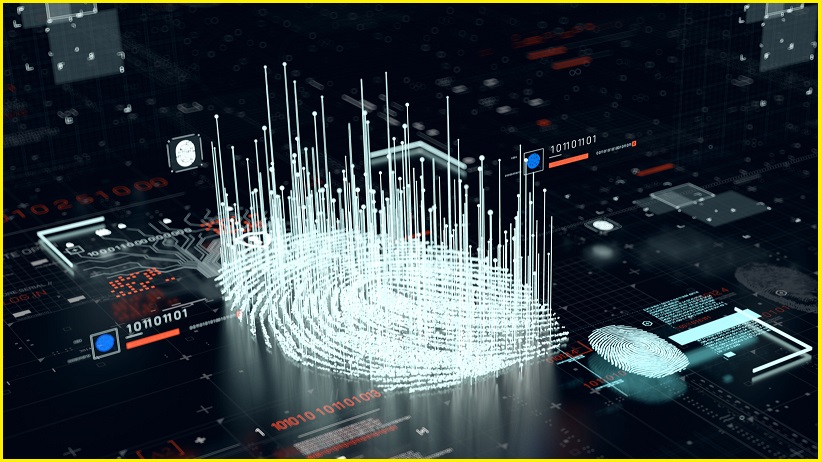Thanks to advances in technology, solving crimes has come a long way from dusting off finger prints to find a criminal.
Claude Roux, UTS professor and director of the Centre for Forensic Science, has seen a lot of changes in his time.
The technology advances range from sophisticated fingermark detection methods to rapid in-field testing, for example, a portable forensics lab (‘lab-on-a-chip’), forensic genetic genealogy, and use of artificial intelligence in different aspects of the forensic work.
He gives a few examples.
Where fingermarks are detected at the crime scene of a break and enter, digital technology allows the crime scene examiner to take photo of the fingermarks and search the fingerprints database remotely.
“An individual is identified in minutes and a police patrol is sent to their home address soon after. The police apprehend the person of interest with the stolen goods in the car when they come home.”
Previously, film photos or physical lifts were taken to the laboratory and an investigator would manually search physical files or physically attend a central computer database.
“This used to take days,” he adds.
In the case of alleged illicit drug possession, an in-field portable instrumentation can identify the drugs and sometimes their purity in a matter of minutes.
“This information can be compiled and shared with other similar cases and locations to identify hot spots or provide intelligence products.”
In other circumstances, the seizure would be sent to the laboratory and analysed using bench instrumentation following a time-consuming procedure.”
This frees up the laboratory from high volume and low importance cases to focus on complex or more important ones.
“We shouldn’t forget that technology is only a tool, an extension of the scientific process forensic practitioners use to help address relevant questions.”
Forensic scientist Jae Gerhard from Independent Forensic Services said almost all areas of laboratory sciences have seen significant technology advancements.
“I work in the field of DNA, and I’ve seen big changes; from the sensitivity of DNA testing kits that test more areas of the DNA, to more advanced instrumentation capable of detecting the smallest amounts.”
One significant advance is the introduction of robotic testing platforms for DNA analysis.
“The two main benefits are firstly, robots are reliable and they minimise the risk of human error; and secondly, they free up staff that would have been performing these tests to undertake other duties.”
Gerhard said that when DNA testing was first introduced, a sample of blood around the size of a 20 cent piece was needed to generate a result, along with a direct sample to match it.
Now the amount required is minute.
“Today, we can generate DNA profiles from just a few tiny cells.”
Crime DNA profile can be uploaded to the national DNA database to search for offenders, and suspects. Interpol can also facilitate the searching of DNA profiles internationally.
Digital forensics
During his ten years in digital forensics, David Kerstjens, head of forensics and data analytics at Law In Order, has seen a shift from law enforcement and government, who were the main users of digital forensics, to individual civil matters.
“Intellectual property theft has also seen a huge rise over recent years due to our data being kept in digital repositories, therefore easily accessed by criminals.”
The most significant tech advance in digital forensics is the growth of data.
“It was once restricted to within a building or a workplace but now individuals have shifted to a more remote workforce and can access their machines or files from anywhere in the world.”
The data sources have grown bigger.
Digital forensic experts now have to be prepared to gather digital evidence from a growing number of sources, such as mobile phones, laptops, ipads, and smart watches, rather than just company-issued devices.
“These technological advances produce a new set of challenges in utilising digital forensics to combat the growing number of cybercrimes and IP theft.”
With analogue phone logs, paper-based records would be used to investigate crimes and establish a timeline which was a slow process and only showed a point in time.
“Now people use mobile phones for everything – they are no longer just used for calls and SMSs, they hold a massive amount of data and are never far away from us.”
He adds, forensic software is used to acquire and analyse a mobile phone, to ascertain who a person was messaging around specific times.
“Mobile phone tower data or GPS data help to identify where they’re located, what they’re googling at the time through to their activity levels which could include step count, heart rates and distance covered.”
Everything is now stored in the cloud and every movement is tracked.
“Forensics software now relies on AI and machine learning to keep up with the data volumes to ensure experts analyse this data quickly or eliminate irrelevant data, and produce data that’s outside normal behaviour to help an investigation.”










